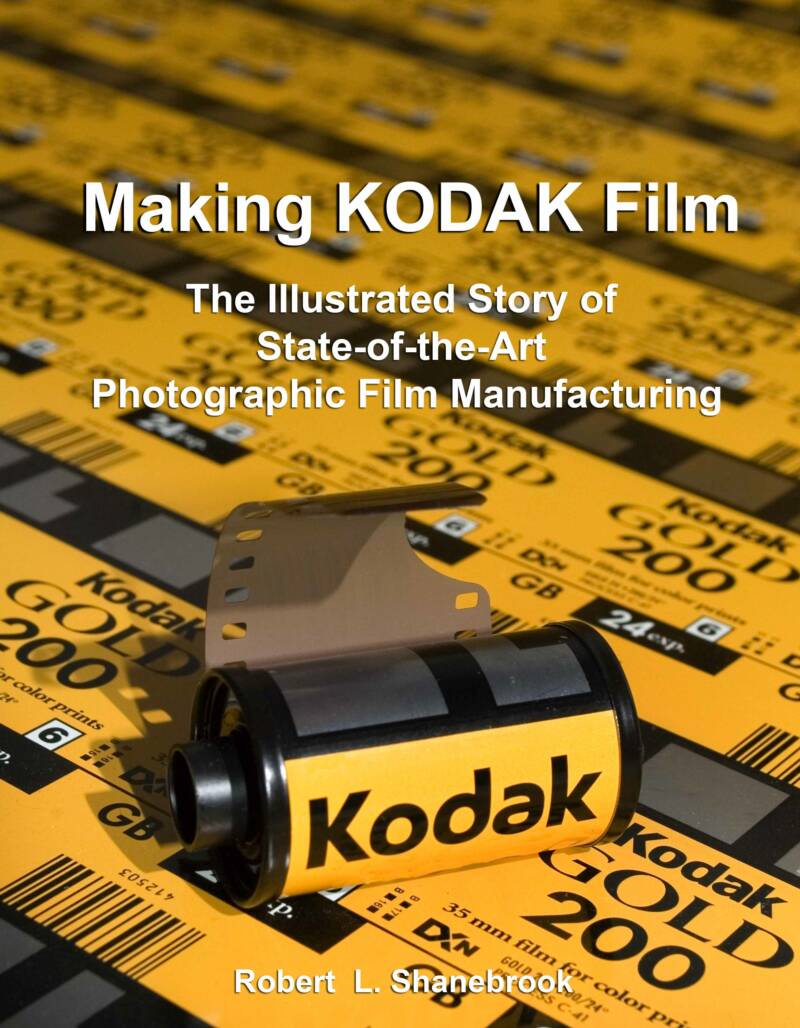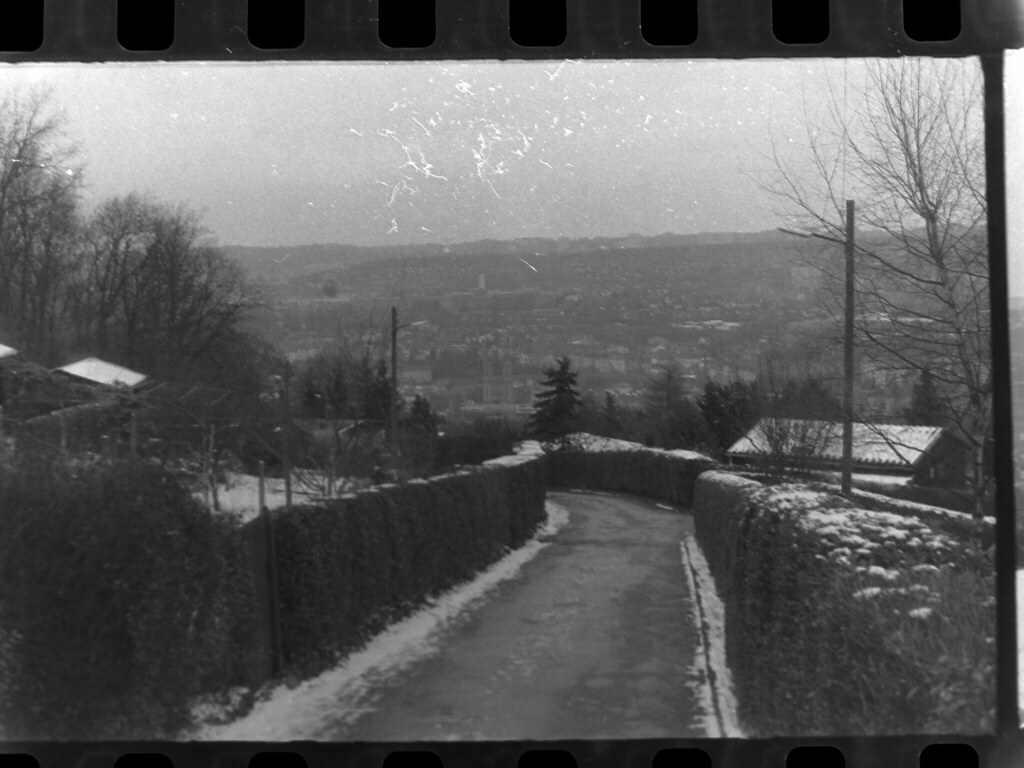Das hier war das erste (von bisher vier) Superweitwinkelobjektiven, die ich
mir gekauft habe. Irgendwie trieb mich damals die Neugier zu extremen
Bildwinkeln, ein 28 mm hatte ich ja schon, durch 24 mm habe ich mal bei
Freunden durchgeschaut, es schien mir immer noch nicht extrem genug. Ende
der 80er Jahre waren meine finanziellen Möglichkeiten als Student sehr
beschränkt, das damals aktuelle
Nikkor 2.8/20 habe ich
mir natürlich im Laden angeschaut (auch wenn es schwer war einen Händler zu
finden, der es auf Lager hatte), es sollte ca. 700 DM kosten, utopisch.
Also habe ich mich unter den Gebrauchtangeboten umgeschaut, die waren aber
bei den SWW extrem selten. Doch bei Foto Riedenklau in
Bielefeld-Sennenstadt stand dann irgendwann das Flektogon hier im Fenster
und ich konnte nicht widerstehen. Für 298 DM inkl. des nötigen M42-Nikon
Adapters wurde das Teil meins und ich habe es wirklich extensiv genutzt,
wie man an der starken Abnutzung und den Beulen im Filtergewinde sieht.
This was the first
of currently four super wide angle lenses, which I bought for myself.
The curiosity drove me to extreme angles of view, a 28 mm I already owned,
through a 24 mm I have seen at friends or even at foto shops. It seemed to
me still not extreme enough. At the end of the 80'ies my financial
capabilities as a student were very limited and of course I couldn't afford
the actual
Nikkor 20 mm f/2.8 . However, I of course looked at it at a
store (even though it was difficult to find a dealer who had it in stock),
the price was about DM 700, utopian. So I looked around at the used stuff
windows, but SWW were extremely rare. Eventually, at Photo Riedenklau in
Bielefeld-Sennestadt I found that Flektogon in the window and I could not
resist. At 298 DM including the M42-Nikon adapter required, the thing got
mine and I've really used it extensively, as shown by the heavy wear and
dents in the filter thread.

|

|
Original M42-Anschluss mit
automatischer Springblende...
original M42 mount with automatic
aperature pin...
|
... und mit M42-Nikon Adapter (mit
Ausgleichslinse)
... and with M42 to Nikon adapter
(incl. correction lens)
|
Das
Flektogon 20
mm f2.8 von Carl Zeiss in Jena (DDR) ist Mitglied einer berühmten
Objektivfamilie dieses
Namens, ausgehend vom Flektogon 35 mm f2.8, welches 1950 als erstes
Weitwinkelobjektiv für eine Spiegelreflexkamera in sog.
Retrofokus-Konstruktion auf den Markt kam. Der Spiegel brauchte halt
Platz im Strahlengang und es war nicht einfach, Objektive zu bauen, die
eine längere Schnittweite als Brennweite aufwiesen. Carl Zeiss hat mit
dieser Serie gezeigt, wie es geht. 1961 kam mit dem Flektogon 20 mm f4.0
das erste SWW dieser Art auf den Markt, bis dahin mussten
Spiegelreflexfotografen bei dieser Brennweite den Spiegel hochklappen (wenn
das ging!) und ein angepasstes Sucherkameraobjektiv verwenden. Viele
Herstellter folgten dem Beispiel von Carl Zeiss, Nikon brachte sein
Nikkor 20 mm UD f3.5 1967 auf den Markt.
Wie man oben sieht, musste ich einen Objektivadapter verwenden, der eine
Ausgleichlinse enthält. Das ist nötig, da Nikon Kameras mit 46.5 mm ein um
1 mm größeres
Auflagemaß haben als
M42-Kameras. Ohne Linse wäre ein Fokussieren auf Unendlich nicht möglich.
Dummerweise verlängert diese Linse die Brennweite leicht, ich hatte also
keine echten 20 mm (und damit 94° Bildwinkel) zur Verfügung, sondern nur
ca. 21-22 mm. Außerdem erhöht eine solche (zwar vergütete) Linse die
optische Leistung sicher nicht (eher im Gegenteil...). Ich habe trotzdem
damit sehr viel fotografiert und auch tolle Aufnahmen gemacht. Einen Tag
nach dem Kauf, am 16. März 1989 zum Beispiel diese hier von der
Stadtbibliothek in Bielefeld.
The
20 mm f2.8 Flektogon by Carl Zeiss in Jena (GDR) is a
member of a famous
family
of lenses of that name, starting from the 35 mm f2.8 Flektogon, which
in 1950 was the first wide-angle lens for an SLR in so-called
retro-focus construction. The mirror just took place in the beam path and it was not
easy to build lenses, which had a longer flange back than focal length.
With this series Carl Zeiss has shown how this can be accomplished. In 1961
the 20 mm f4.0 Flektogon was the first super wide lens of this kind on the
market. Until then SLR photographers had to lock the mirror in the upright
position (if possible!) and use an adapted super wide viewfinder camera
lens (and an additional viewfinder). Many followed the example of Carl
Zeiss, Nikon launched its SLR
Nikkor 20mm f3.5 UD on the market in 1967.
As seen above, I had to use a lens adapter that includes a compensation
lens. This is because Nikon cameras have a longer
flange
back distance than M42 cameras (46.5 vs. 45.46 mm). Without this lens
focusing to infinity is not possible. Unfortunately, this lens increases
the focal length a little, so I had available not really 20 mm (and 94 °
angle), but rather about 21-22 mm. Moreover, such additional lens, although
coated, does not increase the optical performance (rather the contrary...).
However, I lowed it, used it a lot over the years and made some excellent
shots. For example on March 16, 1989, a day after the purchase I shot this
one showing the public library of Bielefeld, Germany.


















































